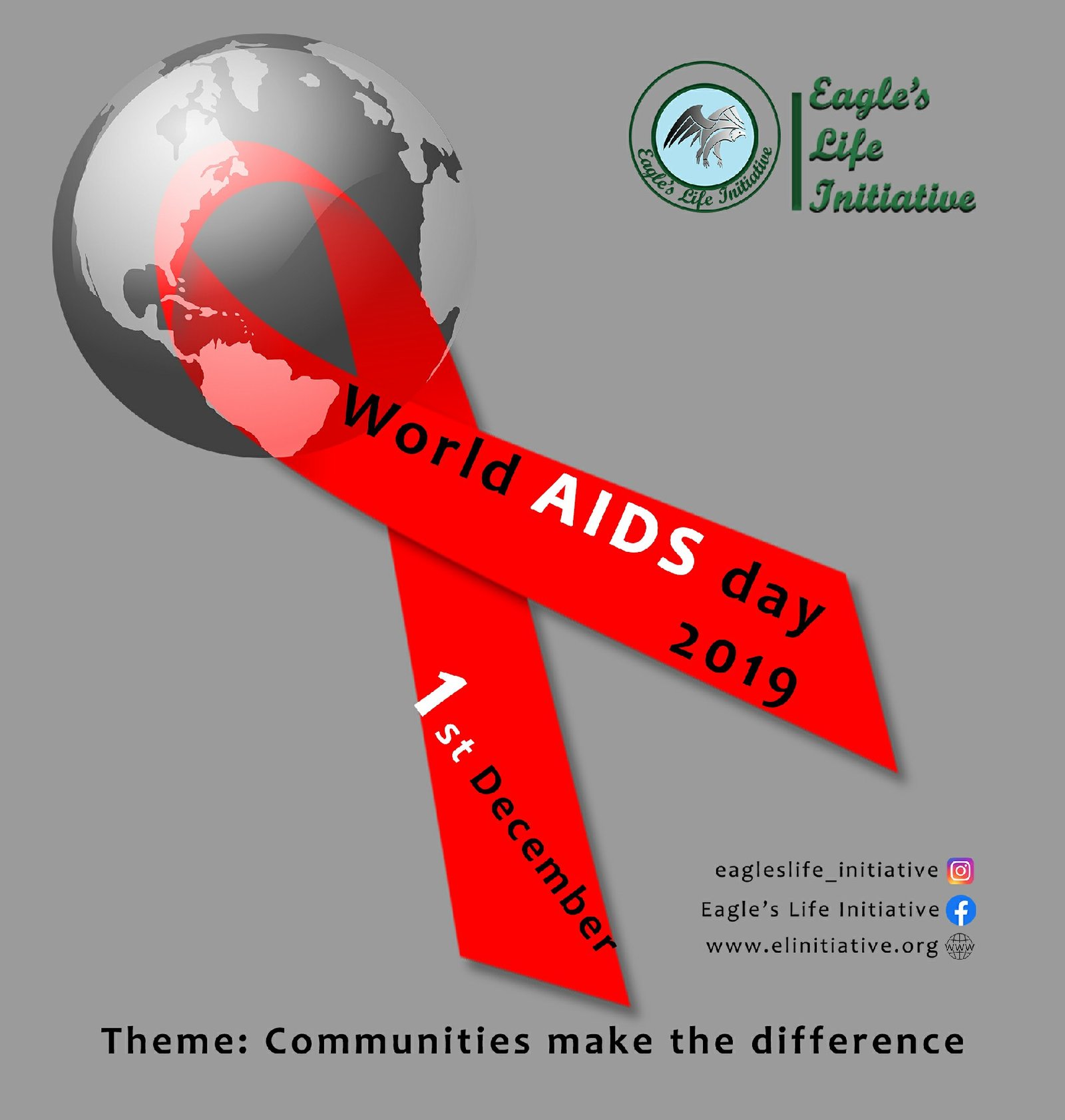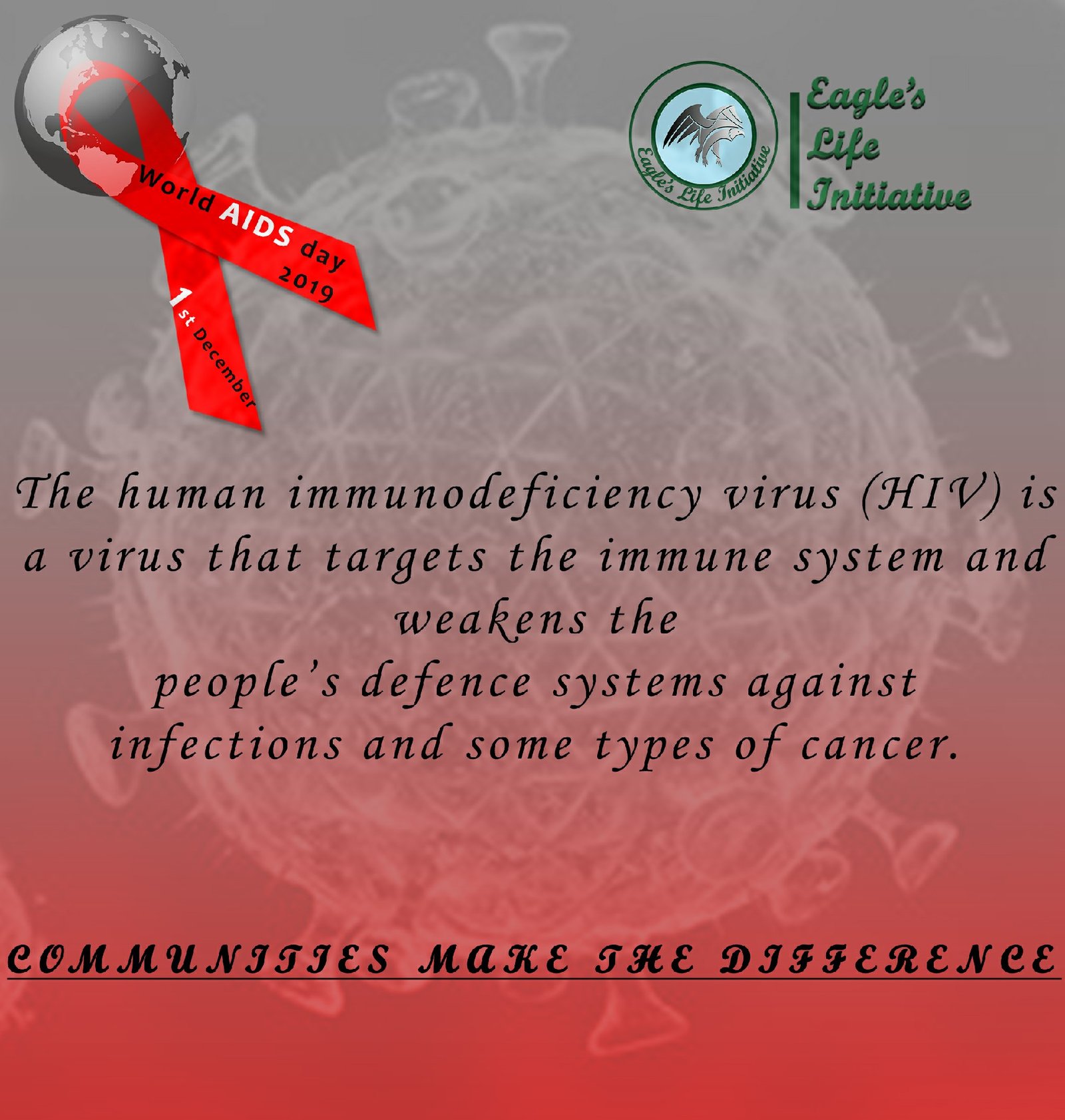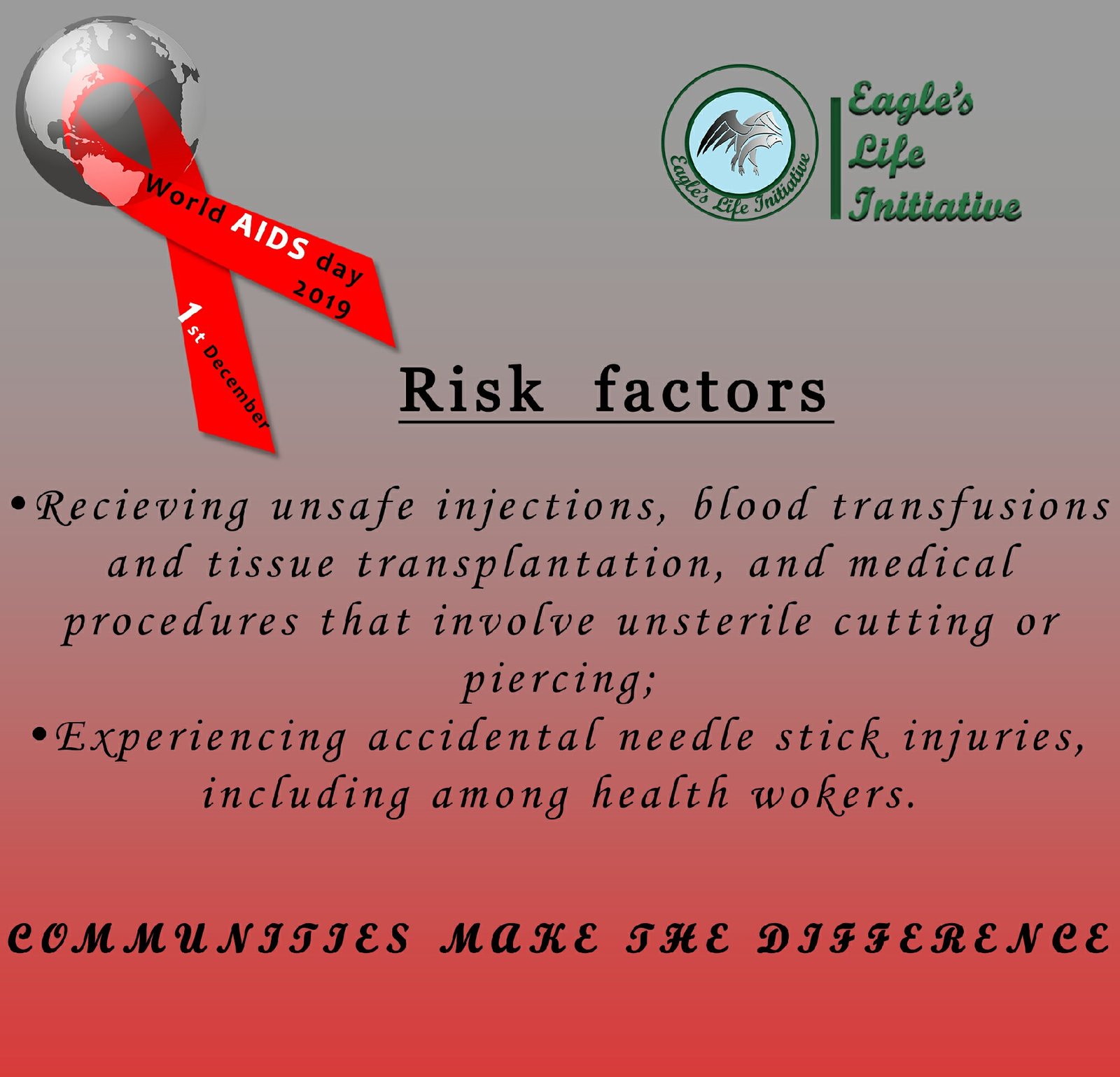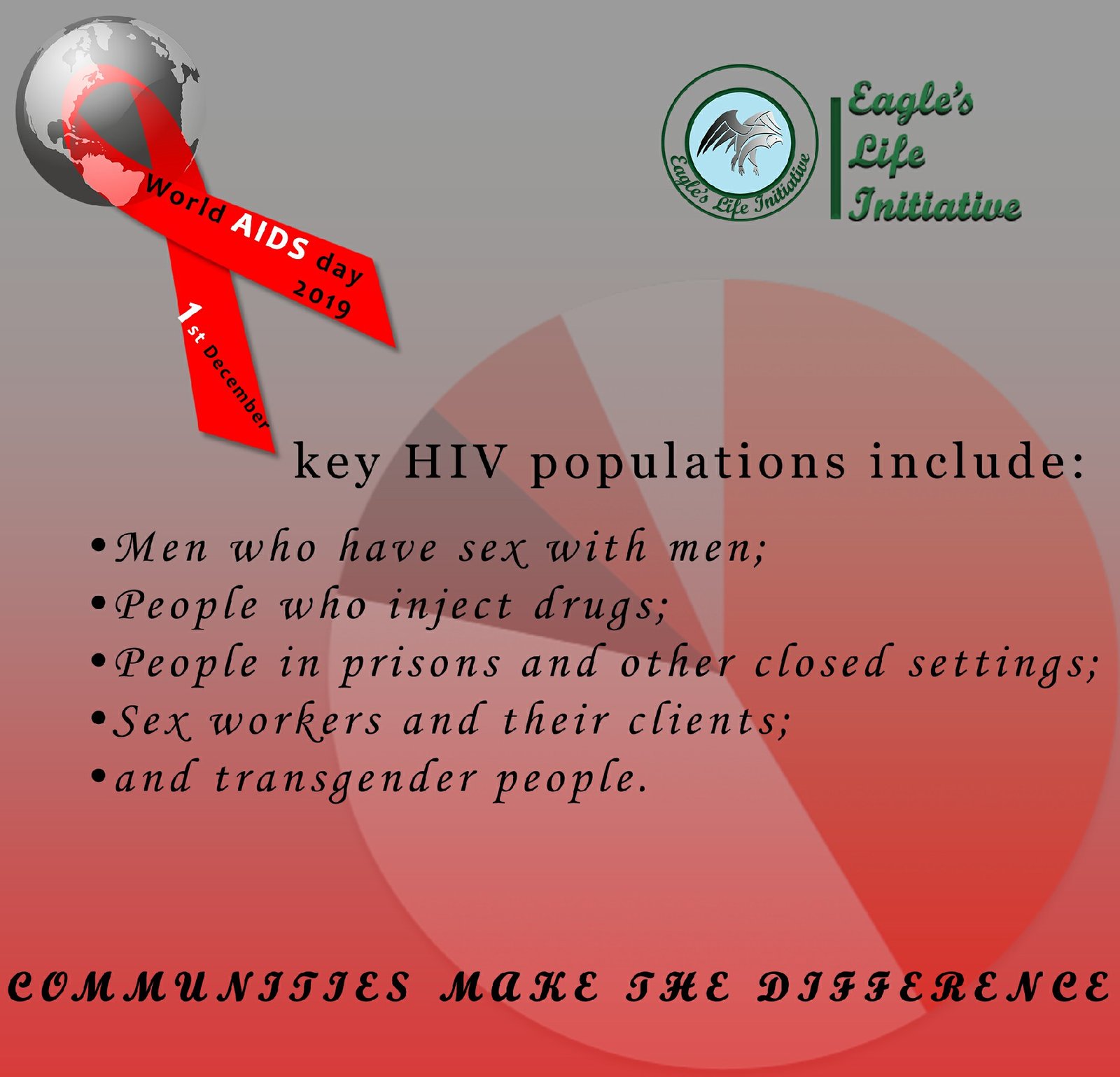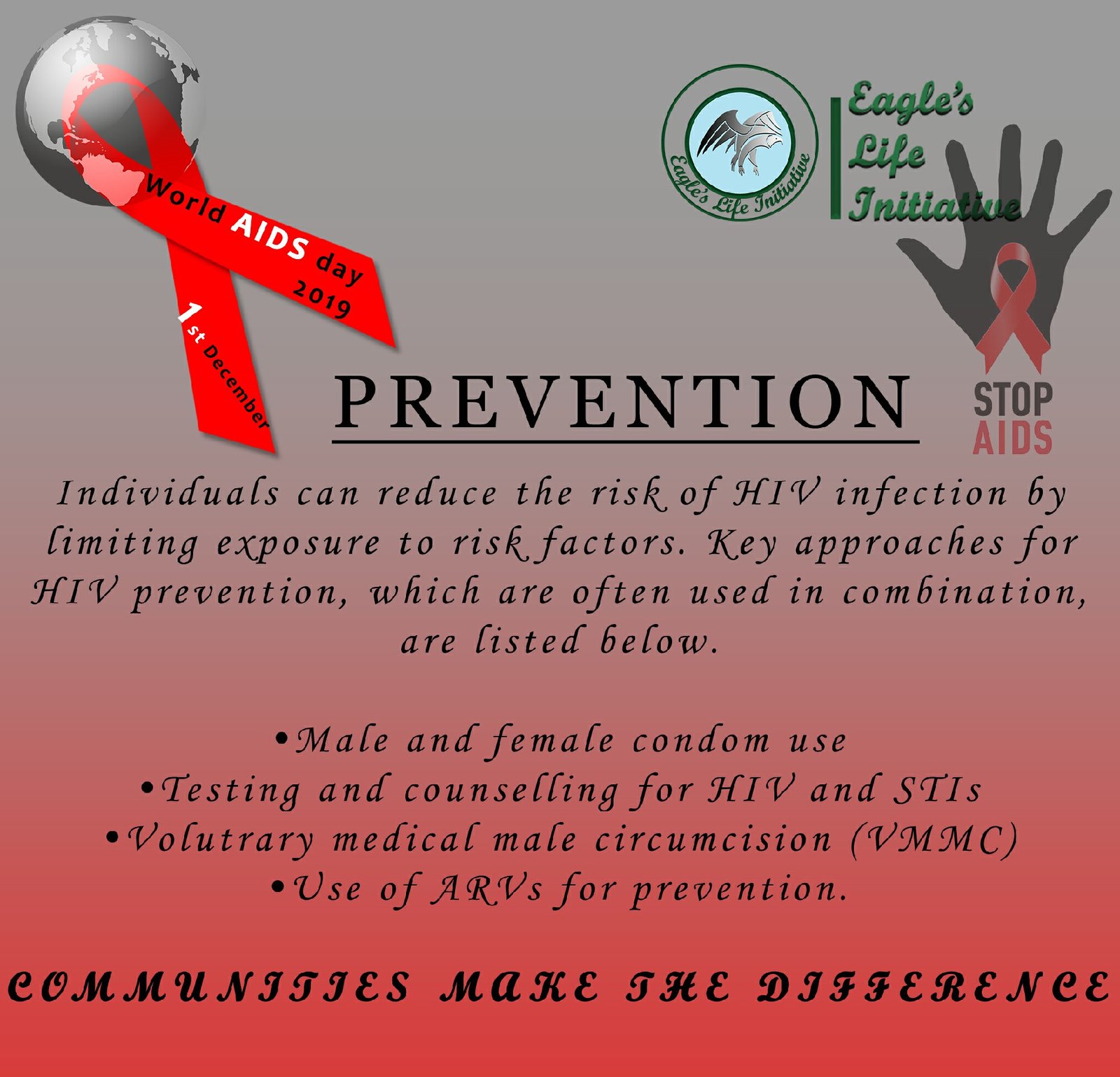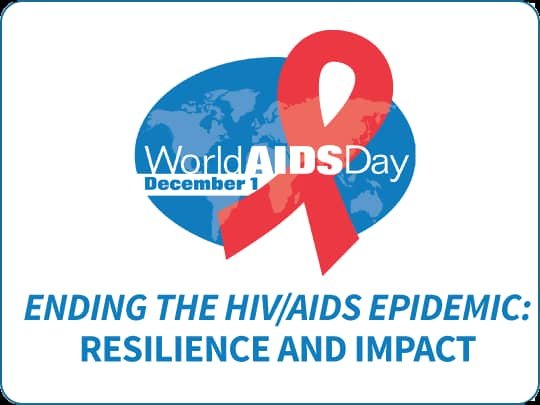World AIDS Day
Theme: communities make the difference
Communities are a unique force behind the success of the HIV response
The human immunodeficiency virus (HIV) is a virus that targets the immune system and weakens people's defence systems against infections and some types of cancer. As the virus destroys and impairs the function of immune cells, infected individuals gradually become immunodeficient. Immune function is typically measured by CD4 cell count.
Immunodeficiency results in increased susceptibility to a wide range of infections, cancers and other diseases that people with healthy immune systems can fight off.
The most advanced stage of HIV infection is acquired immunodeficiency syndrome (AIDS), which can take from 2 to 15 years to develop if not treated, depending on the individual. AIDS is defined by the development of certain cancers, infections or other severe clinical manifestations.
Of the 37.9 million people living with HIV at the end of 2018, 79% received testing, 62% received treatment, and 53% had achieved suppression of the HIV virus with reduced risk of infecting others.
Thousands of community health workers and members of the HIV and key population networks – many of whom are living with HIV or affected by the epidemic – contributed to this success.
On World AIDS Day 2019, WHO is highlighting the difference these communities are making to end the HIV epidemic while drawing global attention to the need for their broader engagement in strengthening primary health care.
Transmission
HIV can be transmitted via the exchange of a variety of body fluids from infected people, such as blood, breast milk, semen and vaginal secretions. HIV can also be transmitted from a mother to her child during pregnancy and delivery. Individuals cannot become infected through ordinary day-to-day contact such as kissing, hugging, shaking hands, or sharing personal objects, food or water.
Risk factors
Behaviours and conditions that put individuals at greater risk of contracting HIV include:
•having unprotected anal or vaginal sex;
•having another sexually transmitted infection (STI) such as syphilis, herpes, chlamydia, gonorrhoea and bacterial vaginosis;
•sharing contaminated needles, syringes and other injecting equipment and drug solutions when injecting drugs;
•receiving unsafe injections, blood transfusions and tissue transplantation, and medical procedures that involve unsterile cutting or piercing; and
•experiencing accidental needle stick injuries, including among health workers
Prevention
Individuals can reduce the risk of HIV infection by limiting exposure to risk factors. Key approaches for HIV prevention, which are often used in combination, are listed below.
•Male and female condom use
•Testing and counselling for HIV and STIs
•Voluntary medical male circumcision (VMMC)
•Use of ARVs for prevention
Facts and figures
•While HIV remains a major global public health issue, most people living with HIV lead long and healthy lives thanks to effective ways to manage the infection. However, people, particularly younger generations should be aware and obtain skills to access HIV prevention, testing, treatment and care.
•HIV continues to be a major global public health issue, having claimed more than 32 million lives so far. However, with increasing access to effective HIV prevention, diagnosis, treatment and care, including for opportunistic infections, HIV infection has become a manageable chronic health condition, enabling people living with HIV to lead long and healthy lives.
•There were approximately 37.9 million people living with HIV at the end of 2018.
•As a result of concerted international efforts to respond to HIV, coverage of services has been steadily increasing. In 2018, 62% of adults and 54% of children living with HIV in low- and middle-income countries were receiving lifelong antiretroviral therapy (ART).
•A great majority (82%) of pregnant and breastfeeding women living with HIV also received ART, which not only protects their health, but also ensures prevention of HIV transmission to their newborns.
•However, not everyone is able to access HIV testing, treatment and care. Notably, the 2018 Super-Fast-Track targets for reducing new paediatric HIV infections to 40 000 was not achieved. Global targets for 2020 are at risk of being missed unless rapid action is taken.
•Due to gaps in HIV services, 770 000 people died from HIV-related causes in 2018 and 1.7 million people were newly infected.
•In 2018, for the first time, individuals from key population groups and their sexual partners accounted for over half of all new HIV infections globally (an estimated 54%) in 2018. For eastern European, central Asian, Middle Eastern and north African regions, these groups accounted for around 95% of new HIV infections.
•Key HIV populations include: men who have sex with men; people who inject drugs; people in prisons and other closed settings; sex workers and their clients; and transgender people.
•Increased HIV vulnerability is often associated with legal and social factors, which increases exposure to risk situations and creates barriers to accessing effective, quality and affordable HIV prevention, testing and treatment services.
•Over two thirds of all people living with HIV live in the WHO African Region (25.7 million). While HIV is prevalent among the general population in this region, an increasing number of new infections occur among key population groups.
•HIV can be diagnosed through rapid diagnostic tests that can provide same-day results. This greatly facilitates diagnosis and linkage with treatment and care.
•There is no cure for HIV infection. However, effective antiretroviral drugs (ARVs) can control the virus and help prevent onward transmission to other people.
•At the end of 2018, an estimated 79% of people living with HIV knew their status. An estimated 23.3 million (or 62% of all) people living with HIV were receiving antiretroviral therapy (ART) and 53% had achieved suppression of the HIV virus with no risk of infecting others.
•Between 2000 and 2018, new HIV infections fell by 37% and HIV-related deaths fell by 45%, with 13.6 million lives saved due to ART. This achievement was the result of great efforts by national HIV programmes supported by civil society and international development partners.
